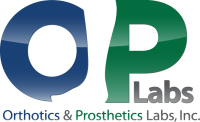Scanning Technologies
Benefits of Scanning for Patients
For years now the movie industry has used scanning to turn small handmade models to into something fit for the big screen. The detail is incredible!
Fortunately for us & our patients, this technology has been adapted for us in patient care. Instead of taking a plaster of fiberglass cast to get an impression of the patient’s body, we can simply scan. No mess. Better detail. Better fitting & more comfortable orthosis or prosthetic device!
The process takes about the same amount of time as casting but the added benefit of increased comfort in the brace (orthosis) has greatly improved our patient care. Many patients, families & doctors alike have all asked what we are doing different … the braces have been fitting so well! Now scanning is not for every circumstance however our staff & the staff of our clinical partners will use this approach whenever it is appropriate. In addition to better compliance (patient actually complying with the wear schedule of the brace), our clinicians are able to use dimensional data to prove results in some cases which further helps us to improve the care we provide.
If you or a loved one requires a device, we hope you are able to enjoy the benefits of the latest in cutting edge technology!
Benefits of Scanning for Medical Professionals
CAD has been available to O&P professionals for a number of years. The trouble is success has been modest and has really only helped us ring efficiencies out of the process. Saving money because we no longer have to ship a cast for fabrication is a good thing but what, really, is that doing to improve care? Because CAD software has been complicated, only computer savvy clinicians can operate many of these systems. Example, how many of us can navigate through MS-DOS computer systems? By the way, some CAD providers still use DOS operating systems!
Thanks to our partnership with Rodin4D, we have focused our CAD program (Windows based) on making CAD (1) easy and (2) integral to outcomes & subsequently in improving our care. We believe if we truly know what our outcomes are, no matter how good already, these outcomes WILL GET BETTER.
Here is an example of how we use CAD for cranial remolding outcomes. No other CAD system has this capability, to compare the exact same cross-section of the skull on two different scans (original base line scan & 6 week follow-up scan, for example). Talk about knowing how the patient is progressing!
Other exciting areas are in the realm of limb volume. A simple report can be generated to document a prosthetic patient’s limb volume changes over time. This certainly aids in justification of new liners, sockets & the like however longterm it will provide us a better understanding of the progression of limb volume changes. Perhaps being better able to predict these changes we can improve care by getting to the right liner sooner AND also save time & money by not having as much trial & error.




